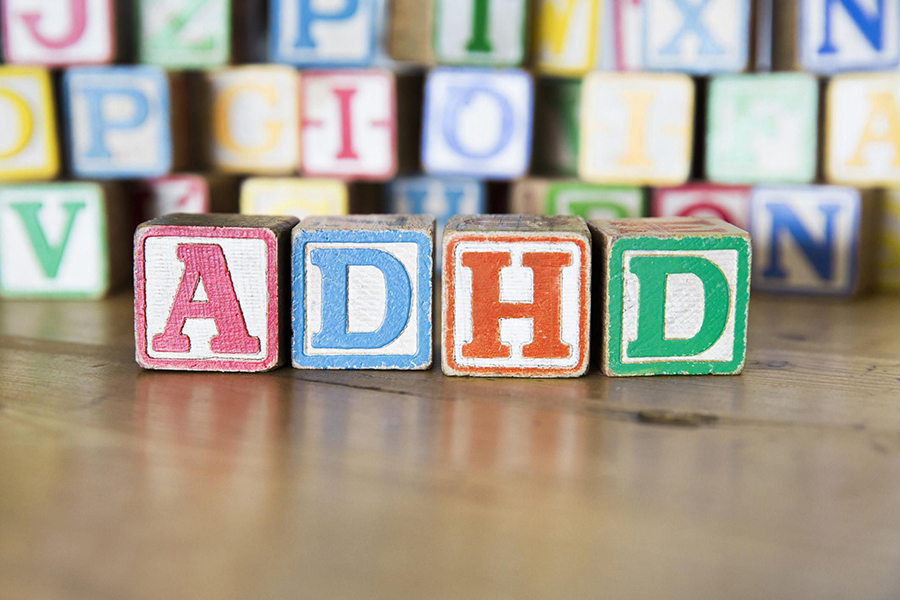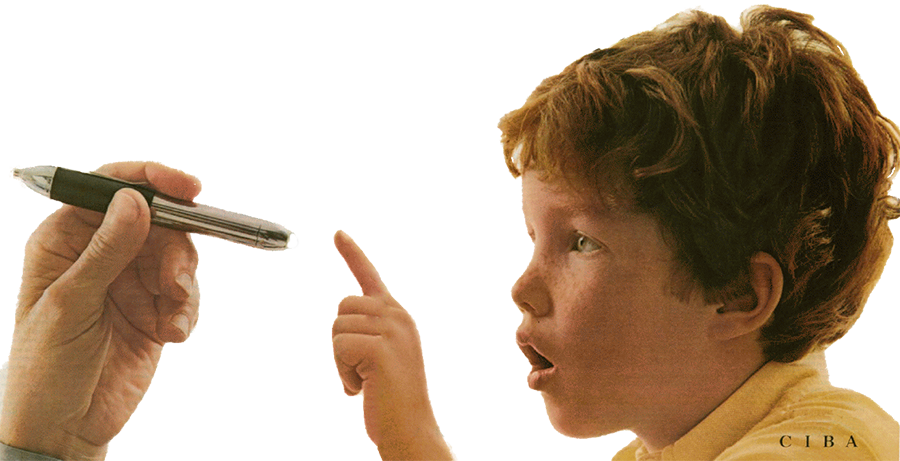Hyperactivity: First, The Diagnosis


And I think I’m being fair in saying also that actual trained Pediatricians are more likely to have greater training and far likelier to be more interested in such “complicated” children than other “family physician” types of practitioners.
But, just because our (pediatricians) caring about kids went clear back to choosing to do our residency training exclusively on children and teens, that doesn’t mean even we all have the same preferences or skills when confronted with a patient requiring a difficult diagnosis, an extended amount of time and effort or gathering data from multiple sources.
For a physician, “doing right” by a child presenting with school difficulties and possible ADHD requires more time and caring than the usual practitioner’s office is set up for. It cannot be done where every telephone conversation is done through intermediaries or within a 15 minute time frame where you’re constantly pushing the visit along to accommodate a busy waiting room.
It shouldn’t even be done during only one office visit or where the mere referral ends with an automatic prescription for medication—merely taking the parents and/or teachers word for it! Or, where teaching, counseling, instructions on parenting or cognitive therapy is completely ignored.
Many important pieces of the puzzle aren’t obvious to parents so require careful “digging” by the doctor during history taking. Numerous diagnostic physical findings are so subtle as not to be observed unless directly looking for them; therefore demand more than a fully-clothed “lick and a miss” physical exam.
And almost no real change in a child’s life is ever obtained without somebody spending time… usually a lot of it; especially required for an issue so all life-encompassing as an education!
So, that’s your first task as a parent: locate a physician who will take the issue serious enough to do a thorough job in diagnosing, explaining and following through with not only you and your child but their teachers/counselors as well.
I’ve already begun to give you examples of what to look for above. We’ll continue below with the latest “scoop” about making a diagnosis of ADHK, ADD, ADHD, MBD… or whatever your teacher or doctor wants to call it. That way you can tell if your child’s issue is getting a “fair shake.”
Diagnosing The Problem
“What can we do until we know for sure?”

I don’t pretend to be the best authority on the issue or that “my” method is the all-encompassing one all doctors should use.
In fact, because my style for this particular issue had its beginning in clinical research, I’ll be the first to admit that it’s a bit detail oriented… and perhaps, a bit compulsive. But, as most of you shall soon realize if you don’t already, it’s often the little things that’ll get you if you’re unaware.
Office Visits and Physical Exam
Truly, you shouldn’t even expect that an all-encompassing problem like failing in school could be accurately diagnosed in merely one sitting… let alone treated.
If a doctor does that, you should know that it does NOT mean he’s just really good at diagnosis. It means that he’s making a lot of assumptions based on “average patients” and truly taking the chance that your child will merely be an “average” case—a lot more than I would want to see if it were a child of mine for this type of condition.
My office people are instructed to place such patients in an “extended” appointment slot. Sometime we can even send out a packet of information about how to make good use of the time by gathering needed information before the visit and coming alone with only one child.
Visit one gathers: all basic information; identifies areas where more information is needed; teaches about what procedures we will follow for this and future visits; and why; and includes a fairly thorough general physical exam for general health. Copies of the rating forms are given for parents, teachers and other care-givers to fill out before the second visit, along with instructions on how to use them.
More than a trivial number of seemingly unrelated medical issues can indirectly mess with a child’s success in school; so, it’s best to at least think of their possibility and make sure they AREN’T there with a good general physical examination.
This visit is also a chance to break the ice and set the stage for a lasting and helpful relationship. Children don’t usually confide in someone they don’t know—or are afraid of.
Visit two finishes up any items left from the history and is usually when information from the school is available. I like to see all grades for prior years, any testing they’ve done and the recently completed rating scales based on the child’s performance during the past week.

The physical exam during this visit is focused on neurological findings related specifically to attention span, discrimination, distractibility and “soft sign” evidence of previous trauma or issues—things that take more experience, a little more time and shouldn’t be rushed.
One of the more useful changes that has been made these past years has been to standardize everyone’s criteria for nearly all of the very subjective observations physicians, teachers and parents make about attentiveness and activity level. Many people have been concerned about children being placed on chronic medications and how easily some physicians have done that in the past.
Just this last year a whole new set of standards were published so everyone could be on the same page, known as the “DSM-5.” It’s a huge book full of numerical codes for about every problem doctors see. It’s the code they make mental health people put on any bill they send to the insurance company and other agencies. Physicians also use ICD-10 and CPT codes on the medical side which correlate; but, the DSM is more specific and comprehensive.
The “5” means that it is the new version which contained a huge amount of changes to make certain that patients aren’t labeled with diagnoses they don’t deserve.
The “current” preferred label is “ADHD” and the first rule for the diagnosis is that the patient must be observed in two or more locations. Generally, the parents, grandparents or babysitters do so at home, and teachers or counselors observe the patient in the classroom. But the opinion of anyone who spends extended and regular time with the child is welcome and valuable.
To standardize people’s observation of the child we predominately use three “fill in the blank” forms: the Connors’ rating scales – most used, both teachers and parent scales; Vanderbilt ADHD Diagnostic Teacher Rating Scale – less used, for teachers; and, Barkley Adult ADHD Rating Scale 4 (BAARS-IV) – for adult patients.
Attention Deficit (AD)
Within those forms are built in observations about how the child does at paying attention; or, another way to say it: “how distractible she is.” And, just so we are all on the same page about this, the new DSM-5 has definitions of inattention too!
DSM-5 Inattention Criteria
- Often fails to give close attention to details or makes careless mistakes in schoolwork, at work, or in other activities
- Often has trouble holding attention on tasks or play activities
- Often does not seem to listen when spoken to directly
- Often does not follow through on instructions and fails to finish schoolwork, chores, or duties in the workplace (eg, loses focus, sidetracked)
- Often has trouble organizing tasks and activities
- Often avoids, dislikes, or is reluctant to do tasks that require mental effort over a long period of time (such as schoolwork or homework)
- Often loses things necessary for tasks and activities (eg, school materials, pencils, books, tools, wallets, keys, paperwork, eyeglasses, mobile telephones)
- Is often easily distracted
- Is often forgetful in daily activities
In order to meet the definition of attention deficit, children up to age 16 years must show six or more of these symptoms and patients aged 17 years or older must show five or more symptoms.
In addition, these symptoms must have been present for at least six months and be inappropriate for the patient’s developmental level.
Hyperactivity (HK)
There are criteria for the symptom of hyperactivity too:
DSM-5’s criteria for hyperactivity-impulsivity
- Often fidgets with or taps hands or feet or squirms in seat
- Often leaves seat in situations in which remaining seated is expected
- Often runs about or climbs in situations where it is not appropriate (adolescents or adults may be limited to feeling restless
- Often unable to play or take part in leisure activities quietly
- Is often “on the go,” acting as if “driven by a motor”
- Often talks excessively
- Often blurts out an answer before a question has been completed
- Often has trouble waiting his/her turn
- Often interrupts or intrudes on others (eg, butts into conversations or games)
To meet the criteria for hyperactivity-impulsivity children up to age 16 years must show six or more symptoms and patients 17 years or older must show at least five.
And, as always, these symptoms must be more than trivial and have been displayed for at least six months—along with being pronounced significant enough to be disruptive and inappropriate for the patient’s developmental level.
Making a Diagnosis of ADHK

Still, putting those two criterion together, they must also meet at least three other standards as well. Several of them must have been present from before age 12. Several must be present in two or more settings (eg home, school, work, friends houses etc.). And, there must be clear evidence that the symptoms interfere with, or reduce the quality of social, school or work functioning.
These are not arbitrary or capricious criteria. If symptoms weren’t present before 12 years old then there are other diagnoses and not ADHD which should be considered. The same goes for those only present in one setting or the other, and those that are not interfering. ADHD is also not diagnosed if there is an association with psychotic disorders or better explained by personality, mood or anxiety disorders.
And, as you can guess, once the diagnosis is made, doctors (and therapists) can divide the group even further into those who are either “combined” or predominately inattentive or hyperactive in nature.
All of this should “ring a bell” for those of you who have experience in this arena. It is similar to how many of us have been dealing with the issue for a long time. It’s just that now the criteria have been written down specifically to help those who don’t keep up in this diagnosis and those with “vested interests” who “muddy the water” so to speak by over-diagnosing.
Now, I guess last of all, I should say that just as a child’s symptoms are expected to change over time, you should expect the presentation and treatment to change as well.
Speaking of treatment, I think we’ve about worn out our attentiveness for this post. We’re going to “see” a real patient together next time to see if we can put all this together; then we’ll list the tried and true treatments we’ve seen that work for children with this issue.
14 Posts in ADHD Hyperactivity (hyperactivity) Series
- Hyperactivity & Puberty - Part 2, Issues and Actions – 22 Jan 2019
- Hyperactivity & Puberty - Part 1 – 10 Jan 2019
- The Children - Followup and Outcomes – 26 Mar 2017
- (Link) Don't JUST take my word for it – 23 Feb 2017
- Treatment: Cognitive Training, Medication – 18 Feb 2017
- Treatment: Five Pillars of ADHD Treatment – 4 Feb 2017
- Treatment: How can we know what works? – 29 Jan 2017
- (Video) Sucess in 'Something' Helps – 20 Jan 2017
- The Patient – 15 Jan 2017
- First, the diagnosis – 11 Jan 2017
- Labels and 'Alphabet Soup' – 7 Jan 2017
- Treating ADHD lowers incidence of smoking! – 15 Jun 2014
- Treatments - 'alternative' – 6 Feb 2013
- ADHD Hyperactivity: Intro/Index – 5 Feb 2013
